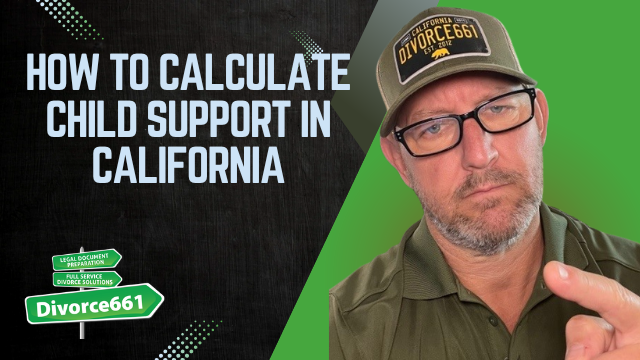How to Calculate Child Support in California
Overview: The Guideline Calculation
In California, child support is calculated using a guideline formula that the courts use. The calculation focuses primarily on two things: each parent’s income and how much time each parent spends with the child. Understanding these elements will help you avoid surprises and plan realistically during a separation or divorce.
What Counts as Income
Income for child support purposes is broader than just your take-home pay. Common items included are:
- Wages and salary
- Bonuses and commissions
- Self-employment earnings and business income
- Other regular income streams that affect your ability to pay
When preparing for a calculation, gather pay stubs, tax returns, business profit and loss statements, and documentation of any additional regular income. Accurate documentation prevents errors and reduces conflict later on.
How Parenting Time Affects Support
Parenting time, often called custody or time-share, directly impacts the guideline child support amount. Generally, the more time you have with the child, the lower your support obligation will be. That is because the formula accounts for the costs each parent covers while the child is in their care.
The more time you have with your child, the lower your support obligation generally is.
Because parenting schedules vary widely—overnights, extended stays, shared time—the guideline calculation adjusts the support amount to reflect each parent’s actual time with the child.
Why Online Calculators Can Be Misleading
Online estimators can give you a ballpark, but they often miss key factors like accurate parenting time adjustments, health insurance contributions, or nonstandard income items. That can lead to a big difference between an estimate and what the court would order when the official calculation is run.
A Real Example
One recent client expected to pay more than $1,000 a month based on online calculators. When we ran the numbers using court-approved software and included his nearly 50 percent parenting time and his health insurance payments for the child, the guideline amount came out to just under $500 a month. That difference saved him thousands per year and helped both parents reach an agreement quickly.
How the Courts Calculate Support
The courts use approved software that implements the guideline formula. The process typically involves:
- Collecting reliable income documentation for each parent
- Documenting the parenting schedule and calculating time with the child
- Accounting for child-related expenses, such as health insurance
- Running the numbers through court-approved software to generate the guideline amount
Using the same tools the court uses reduces surprises and gives you a calculation that stands up in negotiations or in court.
Can Parents Agree to a Different Amount?
Yes. Parents can agree to a child support amount different from the guideline calculation. However, any agreement should be informed and entered into knowingly. If you and your co-parent choose a different amount, it is still wise to document how you arrived at the figure and consider running the guideline calculation first so you both understand the baseline.
Practical Steps to Get Started
- Gather recent pay stubs, tax returns, and business income statements
- Write down your proposed parenting schedule and the typical overnight split
- List child-related expenses you already pay, such as health insurance and daycare
- Run a guideline calculation using court-approved tools or get professional help
- Consider formalizing any agreement in a written order to avoid future disputes
Get It Right the First Time
Accurate child support calculations matter. They affect your budget, the child’s well-being, and how quickly you can move through the separation process. Using the correct tools and including all relevant factors—income, parenting time, and expenses—can make a significant financial difference.
If you want help calculating child support correctly and avoiding unnecessary stress or confusion, visit divorce661.com to schedule a free consultation. We use the same court-approved tools to make sure your calculation is accurate and fair, so you can keep the process smooth and focused on what matters most.




